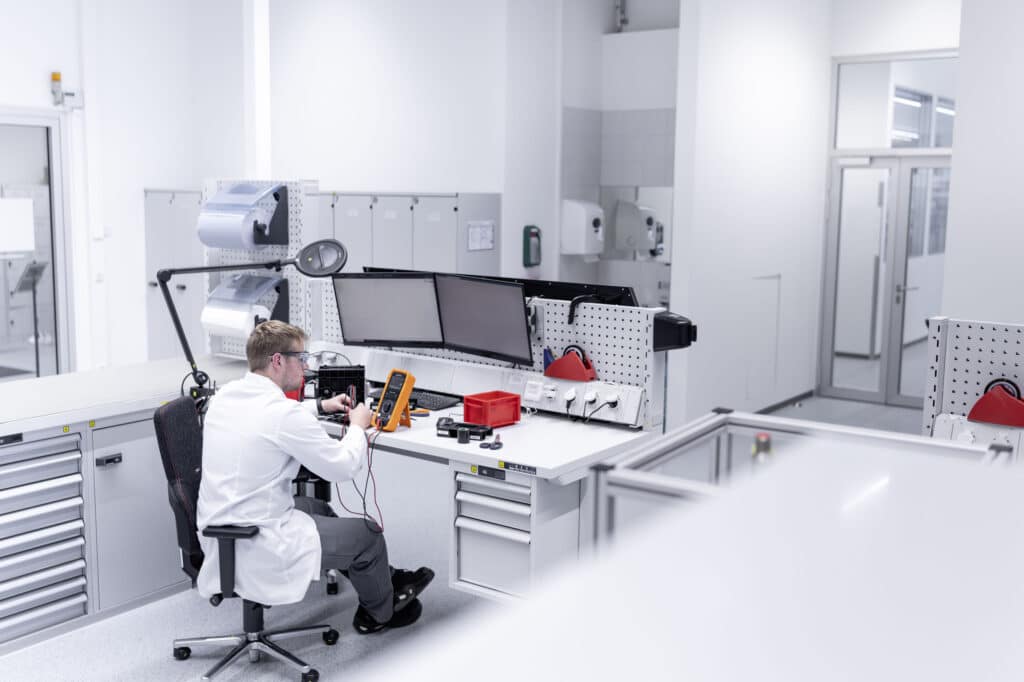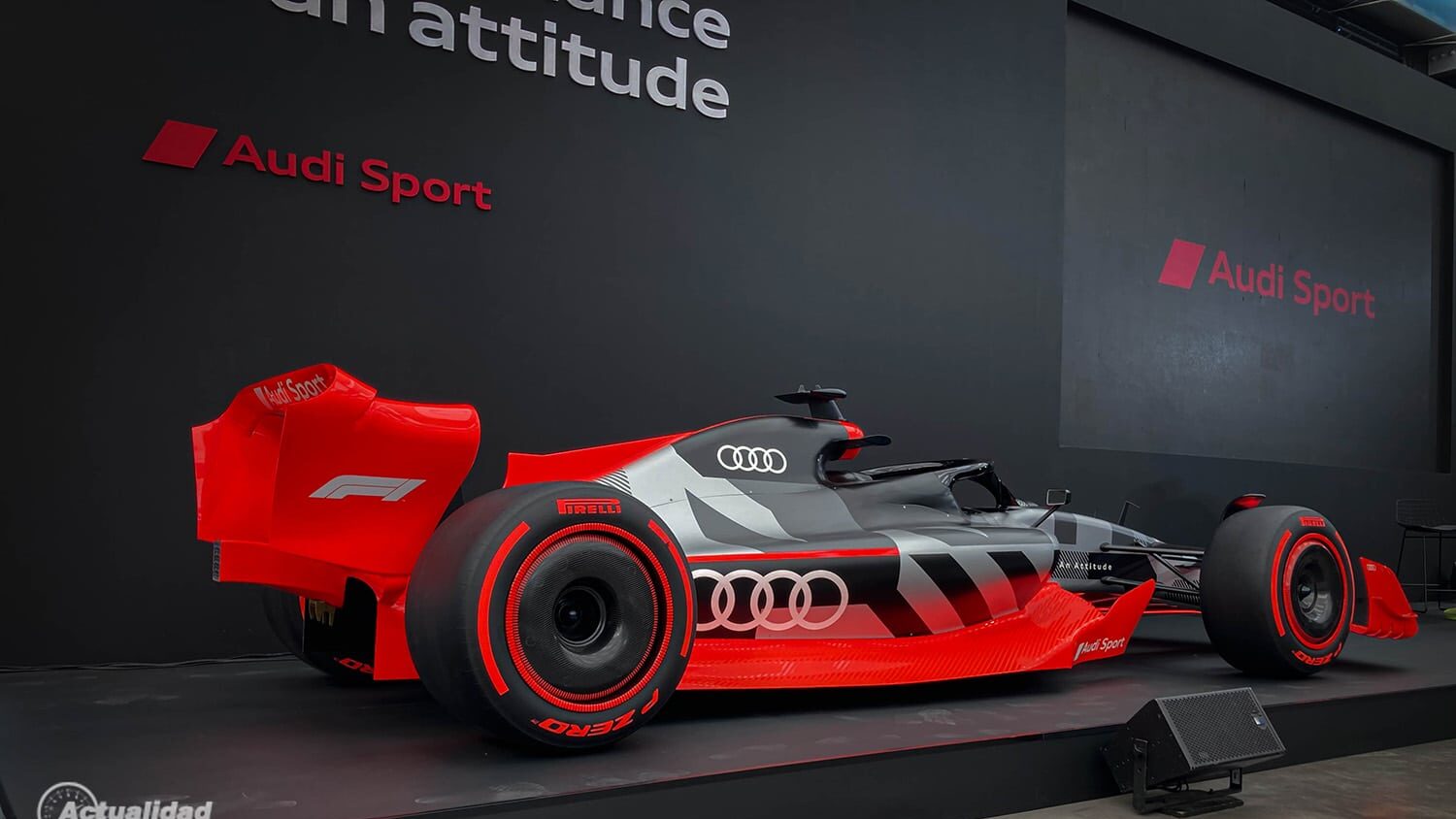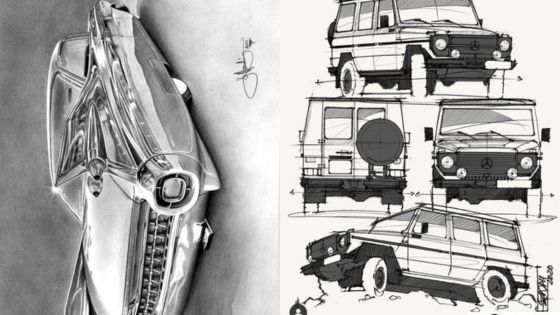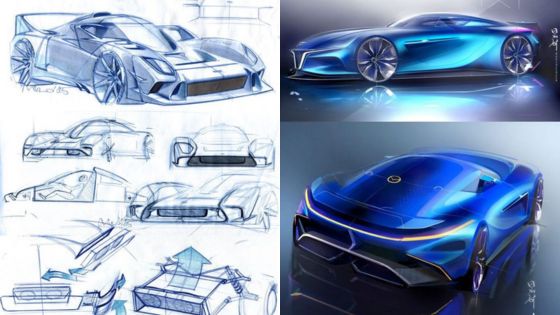Get ready to feel the rumble! The whispers have turned into roars, and the world of Formula 1 is buzzing with anticipation. One of the most monumental entries in recent memory is undoubtedly the Audi F1 project. This isn’t just another car company joining the grid; it’s a statement, a strategic move by a global automotive powerhouse that promises to shake up the sport. From their meticulous planning to their ambitious goals, Audi’s journey into the pinnacle of motorsport is a story packed with innovation, engineering prowess, and a hefty dose of German precision. We’re about to dive deep into everything you need to know about what makes this project so exciting and why it’s set to redefine what we expect from a new F1 contender.


The Siren Call of Formula 1: Why Audi is Taking the Plunge
Audi’s decision to enter Formula 1 isn’t a spur-of-the-moment whim. It’s the culmination of years of strategic evaluation, deep analysis, and a long-standing desire to compete at the absolute highest level of global motorsport. For decades, Audi has dominated endurance racing, excelled in touring cars, and conquered rally stages. Le Mans, DTM, Rallycross – their trophy cabinet is overflowing. But F1? That’s a different beast entirely, the ultimate technical and sporting challenge.
So, why now? A significant factor is the dramatic shift in F1’s technical regulations for 2026. The new rules focus heavily on sustainability, increasing the electrical power component of the hybrid power unit, and mandating 100% sustainable fuels. This aligns perfectly with Audi’s corporate strategy towards electrification and sustainable mobility. It’s a chance to develop cutting-edge technology that isn’t just for the racetrack but has direct relevance to their road cars. Think of it as the ultimate proving ground for future innovations.
Beyond the technical aspect, the marketing reach of Formula 1 is simply unparalleled. With a global audience of hundreds of millions, F1 offers an incredible platform to showcase the Audi brand, its engineering capabilities, and its vision for the future. It’s about brand perception, global visibility, and attracting the next generation of talent and customers. This isn’t just about winning races; it’s about winning hearts and minds on a global scale.

Powering Up for 2026: The New Engine Regulations
The heart of any modern F1 car is its power unit, and the 2026 regulations represent a seismic shift. Gone are some of the complex and expensive MGU-H components, making the engines more approachable for new manufacturers. The electrical power output will be significantly increased, roughly tripling its current contribution, making up about 50% of the total power. This emphasis on electrical energy plays directly into Audi’s strengths and future product roadmap.
Furthermore, the switch to 100% sustainable fuels is a game-changer. This isn’t just about reducing emissions on the track; it’s a critical step towards showcasing the viability of such fuels for everyday vehicles. Audi is investing heavily in research and development to create a competitive power unit from scratch at their facility in Neuburg an der Donau. This means designing, testing, and refining every component, from the internal combustion engine to the sophisticated energy recovery systems and battery technology.
It’s an enormous undertaking, requiring immense resources, brilliant engineers, and tireless dedication. Developing an F1 engine is arguably the most challenging engineering feat in motorsport, and Audi is embracing this head-on. Their commitment to this new technical era is a testament to their belief that they can not only compete but also innovate and push the boundaries of performance and sustainability.

The Sauber Alliance: A Partnership Built for Success
While Audi is developing its own power unit, they aren’t starting completely from scratch on the chassis side. In a smart strategic move, Audi has partnered with the existing Sauber Motorsport team, currently competing as Stake F1 Team Kick Sauber. This collaboration sees Audi acquiring a significant stake in the Swiss-based team, with a full takeover planned by 2026. This means that by their debut year, Sauber will be the Audi factory team.
This partnership is a win-win. For Audi, it provides an established chassis design and manufacturing operation, experienced personnel, and a crucial understanding of F1 race weekend operations and logistics. Building an F1 team from the ground up, including the chassis, is an even more colossal task, and this alliance significantly mitigates that risk. Sauber, on the other hand, gains the financial backing, technical expertise, and long-term stability of a major automotive manufacturer. It’s the injection of resources and vision they’ve been seeking for years.
The integration process is already well underway. Engineers from both sides are collaborating, knowledge is being shared, and infrastructure is being aligned. This isn’t just an engine supply deal; it’s a full-fledged partnership aiming to create a cohesive, competitive unit. The goal is to combine Audi’s engine prowess with Sauber’s chassis expertise to hit the ground running in 2026.

Assembling the Dream Team: People, Passion, and Performance
An F1 team is only as good as its people, and Audi knows this implicitly. They are embarking on an aggressive recruitment drive, attracting top talent from across the motorsport and automotive industries. This includes engineers, aerodynamicists, strategists, mechanics, and logistics experts. The goal is to build a high-performance culture driven by innovation, precision, and an unyielding desire to win.
Adam Baker, CEO of Audi Formula Racing GmbH, is spearheading this monumental effort. His experience and leadership are crucial in shaping the team’s direction and fostering a cohesive environment. They’re not just looking for individuals with impressive résumés; they’re looking for passionate problem-solvers who thrive under pressure and share Audi’s core values. This focus on human capital is essential for building a sustainable, successful F1 program.
The scale of this operation is immense. Developing an F1 power unit from scratch requires hundreds of dedicated individuals, and the integration with the existing Sauber team further expands this workforce. It’s about bringing together diverse talents from different backgrounds and cultures, all united by a common goal: to propel Audi to the front of the F1 grid. When you consider the meticulous planning that goes into even small details, such as optimizing a car’s User Interface, it’s clear that human design and engineering precision are paramount in every facet of automotive development, including F1. Learn more about automotive UI design and its importance.

The Heart of the Operation: Ingolstadt and Neuburg
Audi’s F1 power unit project is headquartered at a state-of-the-art facility in Neuburg an der Donau, Germany, close to Audi’s main headquarters in Ingolstadt. This isn’t just a workshop; it’s a sprawling campus dedicated to motorsport innovation. Significant investments have been made to expand and equip this facility with everything needed for F1 engine development.
This includes cutting-edge test benches for single-cylinder development, full-engine dynos, and advanced simulation tools. These facilities allow engineers to rigorously test components and entire power units under extreme conditions, mimicking the demands of an F1 race without ever setting foot on a track. The data generated from these tests is crucial for iterative design improvements and performance optimization.
The proximity to Audi’s main technical development centers in Ingolstadt also offers synergistic benefits. Expertise, resources, and technologies can be shared and leveraged, blurring the lines between motorsport development and road car innovation. This integrated approach ensures that the knowledge gained in F1 can directly feed into Audi’s wider electrification and performance strategies, showcasing the symbiotic relationship between racing and production vehicles.
Driving Towards a Greener Future: Sustainability and Innovation
Audi’s entry into F1 is intrinsically linked to its commitment to sustainability. The 2026 regulations, with their emphasis on increased electrical power and 100% sustainable fuels, provide a perfect platform for Audi to demonstrate its leadership in this area. Sustainable fuels, derived from non-fossil sources, are a key part of the global effort to decarbonize transport, and F1 offers a high-profile arena to develop and showcase their potential.
Beyond the fuel itself, Audi is also focused on sustainable practices within its F1 operations. This includes optimizing energy consumption at its Neuburg facility, exploring advanced materials, and minimizing waste. The goal is not just to comply with regulations but to push the boundaries of environmental responsibility in motorsport. This commitment extends to every aspect of their operations, down to the careful selection of parts, much like considering if performance air filters really make a difference for efficiency and impact.
Moreover, the technologies developed for the F1 power unit – particularly in battery technology, energy recovery systems, and high-efficiency internal combustion engines – have direct relevance to future Audi road cars. F1 serves as an accelerated research and development laboratory, pushing the limits of what’s possible and bringing those innovations to consumers faster. It’s a clear statement that high performance and environmental responsibility can, and must, go hand in hand.

The Global Stage: Marketing and Brand Impact
Formula 1 is a global spectacle, reaching audiences in every corner of the world. For a premium brand like Audi, this immense visibility is a priceless asset. Entering F1 allows Audi to connect with a younger, diverse, and globally engaged audience, many of whom are passionate about technology, speed, and innovation. This exposure will undoubtedly strengthen Audi’s brand image, reinforcing its position as a leader in engineering, performance, and future mobility.
The F1 platform offers incredible opportunities for brand storytelling. From showcasing their technical prowess and commitment to sustainability to highlighting the human drama of competition, Audi will have a powerful narrative to share. This will translate into increased brand awareness, enhanced brand perception, and ultimately, a stronger connection with existing and potential customers.
Beyond direct advertising, the “halo effect” of F1 success can’t be overstated. A winning F1 team generates immense positive association, portraying the brand as cutting-edge, ambitious, and successful. It creates a powerful emotional resonance that traditional advertising campaigns simply cannot replicate. For Audi, F1 is more than just a race; it’s a pivotal part of their global brand strategy for the next decade and beyond.

The Road Ahead: Challenges and Realistic Expectations
Entering Formula 1 as a new power unit manufacturer is one of the most daunting challenges in motorsport. The complexity of the hybrid power units, the intense competition from established teams, and the sheer pace of development required are immense. Audi is not naive to these challenges. They understand that success in F1 rarely comes overnight.
Even with substantial resources and top talent, developing a competitive engine takes time. Mercedes, Honda, and Ferrari have decades of F1 engine development experience. New entrants typically face a steep learning curve. The initial years will likely be about consistent improvement, reliability, and gradually closing the performance gap. Setting realistic expectations is key.
However, Audi’s methodical approach, significant investment, and strategic partnership with Sauber give them a strong foundation. Their history of success in other demanding motorsports categories also demonstrates their capability to master complex technical challenges. The target is clear: to be competitive and fighting for wins within a few years of their 2026 debut. It’s a marathon, not a sprint, but Audi is certainly equipped for the long haul.
The Countdown to Kick-Off: Anticipation Builds
The anticipation for the Audi F1 project is palpable. Motorsport fans, industry experts, and Audi enthusiasts are all eagerly awaiting the moment the iconic four rings hit the F1 grid. This entry represents a thrilling new chapter for both Audi and Formula 1 itself. It signifies the sport’s continued appeal to major manufacturers and its relevance as a platform for technological advancement.
As 2026 draws closer, we’ll see more details emerge: driver announcements, livery reveals, and the sound of that new Audi power unit roaring to life for the first time. It promises to be an exciting journey filled with engineering breakthroughs, competitive battles, and the relentless pursuit of perfection. This is more than just a new team; it’s a force entering Formula 1 with a clear vision, deep pockets, and a heritage of winning. The future of F1 just got a whole lot more interesting.

The Ultimate Race Awaits
The Audi F1 project is a bold, ambitious venture that epitomizes the spirit of innovation and competition. From the strategic reasoning behind their entry, driven by the 2026 regulations and a push for sustainability, to the meticulous development of their power unit and their crucial partnership with Sauber, every step is calculated. Audi is not just joining the race; they are committed to shaping its future.
With significant investment in facilities and talent, Audi is building a formidable operation designed for long-term success. Their journey will be watched closely, not just by motorsport aficionados, but by anyone interested in the future of automotive technology and high-performance engineering. This is a chance for Audi to once again prove its “Vorsprung durch Technik” – advancement through technology – on the world’s biggest motorsport stage. Get ready, because the show is about to begin!
Why has Audi decided to join Formula 1 at this particular time?
Audi’s decision to enter Formula 1 aligns with the major regulatory changes for 2026, focusing on sustainability, hybrid power, and electrical energy, which match Audi’s corporate strategy toward electrification and sustainable mobility.
What is the significance of the new engine regulations for 2026 for Audi?
The 2026 regulations will significantly increase electrical power output and introduce 100% sustainable fuels, providing a perfect platform for Audi to leverage its strengths in electrical systems and sustainable energy.
How does the partnership with Sauber benefit Audi’s F1 ambitions?
The partnership allows Audi to utilize Sauber’s established chassis design, experience, and race operation expertise, which helps mitigate risks and accelerates their path to competitiveness in F1.
What steps is Audi taking to develop its F1 power unit?
Audi is investing heavily in research and development at their Neuburg facility, designing and testing components such as internal combustion engines, energy recovery systems, and batteries to create a competitive power unit from scratch.
- 0shares
- Facebook0
- Pinterest0
- Twitter0



